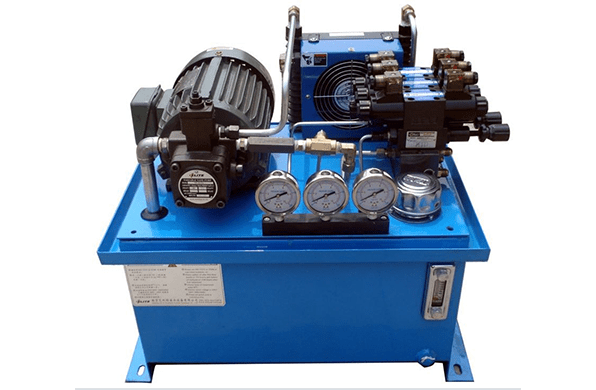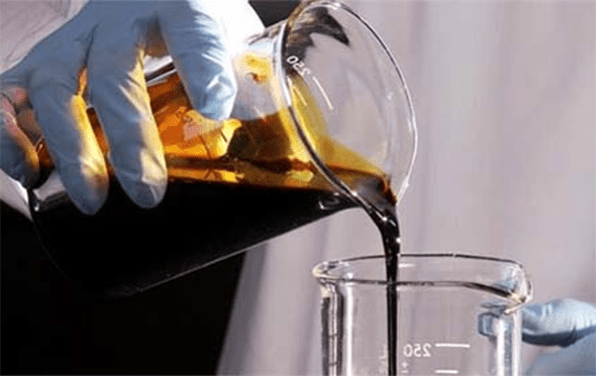
The hydraulic system is a high-precision, high-efficiency energy transmission system that is widely used in various mechanical equipment. However, when the hydraulic system is working, malfunctions may occur due to various reasons, affecting the normal operation of the equipment. Therefore, being familiar with common faults of hydraulic systems is of great significance for maintaining equipment and timely discovering and troubleshooting faults.
1. Troubleshoot Common Faults in Hydraulic Systems
1.1 Excessive System Noise, Vibration, and Impact
|
Fault Content and Causes |
Troubleshooting Methods |
|
|
pump noise |
Pump sucks nothing or sucks air |
Check whether the oil temperature and fluid level are too low, whether the filter is clogged, whether the flange connection is tightened, and whether the rotational speed of the drive unit is correct |
|
Unaligned coupling |
Adjust the alignment accuracy to meet relevant requirements |
|
|
Worn or damaged pump |
Repair or replace |
|
|
Pump station resonance |
Unreasonable design and configuration |
Adjust piping and fix connection |
|
Excessive motor noise |
Unaligned coupling |
Adjust the alignment accuracy to meet relevant requirements |
|
Electric motor worn or damaged |
Repair or replace |
|
|
Too noisy relief valve |
Spring resonance |
Adjust the setting value or replace the spring |
|
Valve core damaged |
Repair or replace the valve core |
|
|
Too noisy directional control valve |
Excessive vibration and impact during direction change |
Extend the direction change time or reduce the control pressure |
|
Heavy vibration of hydraulic cylinder |
Air enters hydraulic cylinder |
Remove air from the cylinder |
|
Large vibration and shock of the piping system |
Improper piping or fixing |
Adjust unreasonable piping or increase the number of pipe clamps |
1.2 Hydraulic Oil Leakage
Causes: It is mostly caused by damaged seals, loose joints, worn or broken pipes.
Solutions:
1. Check whether the seal is intact. If damaged, replace it.
2. Tighten all joints to ensure a tight connection.
3. Check whether the pipeline is worn or cracked. If necessary, replace the pipeline.
1.3 Hydraulic Oil Contamination
Hydraulic oil contamination is one of the common faults in hydraulic systems. It will cause increased wear of components in the hydraulic system and affect the normal operation of the equipment. It may be caused by air, water, impurities, etc. entering the hydraulic system.
Solution: Clean the system and replace the oil.

1.4 Too High Hydraulic Oil Temperature
Causes: It is usually caused by a faulty cooler, poor cooling of the tank, system overload, or excessive hydraulic oil viscosity.
Solutions:
1. Check the operating status of the cooler to ensure it is working properly.
2. Improve the cooling conditions of the oil tank, such as increasing the heat dissipation area or adding a cooling fan.
3. Reduce the load on the hydraulic system to reduce the burden on the hydraulic pump.
4. Replace the oil with the appropriate as needed to reduce its viscosity.
1.5 Components Overheating in the System
|
Fault Content and Causes |
Troubleshooting Methods |
|
|
Hydraulic pump overheated |
Incorrect pump variable displacement mechanism setting or pressure valve setting |
Readjust the variable displacement mechanism or pressure valve |
|
Pump worn or damaged |
Repair or replace |
|
|
Pump sucks nothing or sucks air |
Check whether the oil temperature and fluid level are too low, whether the filter is clogged, and whether the flange connection is tightened |
|
|
Hydraulic motor overheated |
Incorrect variable displacement mechanism setting or pressure valve setting |
Readjust the variable displacement mechanism or pressure valve |
|
High temperature of oil sucked |
Find out the cause of the system oil temperature rising and troubleshoot it |
|
|
Wear or damage |
Repair or replace |
|
|
Relief valve overheated |
High temperature of oil sucked |
Find out the cause |
|
Incorrect settings |
Reset |
|
|
Wear or damage |
Repair or replace |
|
1.6 Abnormal System Pressure
|
Fault Content and Causes |
Troubleshooting Methods |
|
|
Insufficient pressure |
Relief valve or bypass valve damaged |
Repair or replace |
|
Too low pressure reducing valve setting value |
Reset |
|
|
Incorrect integrated channel block design |
Repair or replace |
|
|
Pressure reducing valve damaged |
Repair or replace |
|
|
Damaged pump, motor or cylinder |
Repair or replace |
|
|
Unstable pressure |
Oil mixed with air |
Repair leak, bleed air out of the system and add oil |
|
Relief valve wear, poor spring stiffness |
Repair or replace |
|
|
Oil contamination and clogged valve orifice |
Clean the system and replace oil |
|
|
Accumulator failure |
Repair or replace |
|
|
Pump, motor or cylinder wear |
Repair or replace |
|
|
Too high pressure |
The setting values of the pressure reducing valve, relief valve or unloading valve are incorrect |
Reset |
|
Variable displacement mechanism not working |
Repair or replace |
|
|
Pressure reducing valve, relief valve or unloading valve is clogged or damaged |
Clean or replace the corresponding valve |
|
1.7 Abnormal System Flow Rate
|
Fault Content and Causes |
Troubleshooting Methods |
|
|
No oil flow |
The pump does not suck oil flow |
Check whether the oil level in the oil tank is low, whether the suction inlet valve is open, whether the oil suction filter is blocked, etc. |
|
Incorrect rotational direction of the pump drive unit |
Adjust the rotational direction |
|
|
Incorrect set pressure of the valve |
Adjust the pressure valve |
|
|
All oil fluids flow back to the tank through other passages |
Find the oil drain passage |
|
|
Low oil flow rate |
Incorrect pump variable displacement mechanism setting |
Reset and adjust |
|
The pressure setting of the relief valve or unloading valve is too low |
Reset the pressure |
|
|
Fluid flows back to the tank through other valves that are not closed |
Find the components that are not closed and repair them |
|
|
Component wear or damage causes excessive internal leakage in the system |
Repair or replace components |
|
|
Too high oil flow rate
|
Flow control valve set too high |
Reset |
|
Incorrect pump variable displacement mechanism adjustment |
Readjust |
|
|
Incorrect rotational speed of the pump drive unit |
Replace with correctly equipment or readjust |
|
1.8 Abnormal System Movement
|
Fault Content and Causes |
Troubleshooting Methods |
|
|
The system pressure is normal but the actuator does not move |
Faulty solenoid coil in the solenoid valve |
Troubleshoot or replace |
|
Amplifier not working or adjusted incorrectly |
Adjust, repair or replace |
|
|
Valve not working |
Adjust, repair or replace |
|
|
The limit or sequence device not working or adjusted incorrectly |
Adjust, repair or replace |
|
|
Damaged hydraulic cylinder or hydraulic motor |
Repair or replace |
|
|
The actuator moves too slowly |
Insufficient output flow of the pump or too large system leakage |
Inspect, repair or replace |
|
Too high or too low oil viscosity |
Check, adjust or replace |
|
|
Insufficient control pressure of the valve or blocked valve orifice |
Adjust or clean |
|
|
Too large external load |
Check and adjust |
|
|
The amplifier malfunctions or is misadjusted |
Adjust, repair or replace |
|
|
Valve core stuck |
Clean the valve, and filter or change oil |
|
|
Hydraulic cylinder or hydraulic motor severely worn |
Repair or replace |
|
|
Irregular movement |
Abnormal pressure |
See the troubleshooting methods mentioned above |
|
Oil mixed with air |
Add oil and get the air out of the system |
|
|
The amplifier malfunctions or is misadjusted |
Adjust, repair or replace |
|
|
Sensor feedback failure |
Repair or replace |
|
|
Valve core stuck |
Clean the valve and filter oil |
|
|
Worn or damaged hydraulic cylinder or hydraulic motor |
Repair or replace |
|
|
Overspeed movement |
Flow control valve failure |
Adjust, repair, replace |
|
Feedback sensor failure |
Adjust, repair, replace |
|
|
The servo amplifier is incorrectly adjusted or malfunctions |
Adjust, repair, replace |
|
|
Balance valve failure |
Adjust, repair, replace |
|
2. Conclusion
The above content is for reference only, and specific solutions should be applied flexibly according to the actual situation. In actual operation, hydraulic system engineers need to have solid theoretical knowledge and rich practical experience in order to quickly and accurately diagnose and solve various faults in the hydraulic system.


